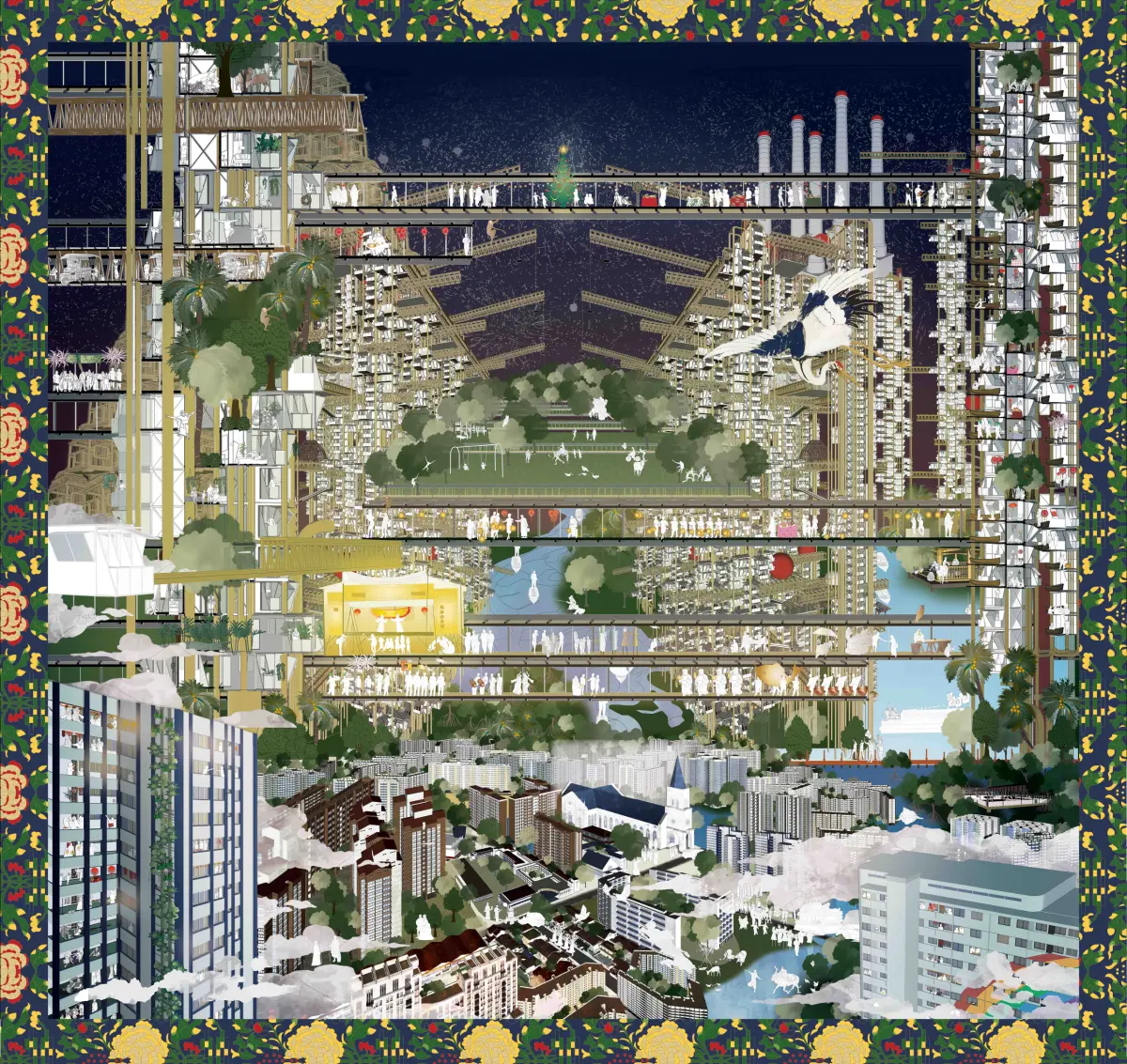
How to Build An Unseen Empire: Architectural Ethnography for City Planning
BY Choo Hui Zhi
SUPERVISED BY Asst. Prof. Simone Chung (Dr.)
STUDIO THEME ARCHITECTURE’S BACK LOOP
Abstract
“Momento Mori” is a reminder of mortality - everything will eventually die. Similarly, Singapore’s built environment faces the inevitable destine for ruin, removal, and change because of our pragmatic approach towards development. Space-making is curated through a non-linear palimpsest, which comprises layers and traces from a multiplicity of contexts, both spatial and temporal. Yet, they are slammed with singular, cliché state narratives, which often discount the nuanced micronarratives of the people that inhabited the place and its ‘spirit’.
Since the 1970s, there has been a boom in scholarship on memory studies which are traditionally centred around the human mind. Even in the field of architecture, it has been limited to what has been outlined in the Art of Memory (Frances Yates, 1966) – which conceptualizes the brain as a physical space that stores memories like how one stores objects in the room. Hence, this thesis argues that architecture can have memories by examining it with the most influential memory model, the Multi-Store Model (MSM) (Atkinson and Shiffrin, 1968). It proposes that memory consists of three stores: a sensory register, short-term memory (STM) and long-term memory (LTM) and that information is transferred between these stores. Acknowledging that this model is an oversimplification of the memory-making process, it provides a foundation for deeper inquiry of architecture’s memory-making processes through the stories of its people.
Unlike the state’s one-size-fits-all approach, this thesis aims to develop a more humanistic framework for future city planning through Architectural Ethnography and drawing as a process. This is to uncover the unseen realities of its landscape, like its intangible heritage, frictionless co-existence, and the palimpsest of lived experiences. Using Hougang as a testbed for this framework, it serves to inspire critical thought about our future landscape through imaginative reconstruction by depicting a landscape of festivity.
Supervisor Comments
In the spirit of Levi and Ginzburg, the thesis’ adoption of Architectural Ethnography and the heuristic practice of drawing as the vehicle for discovery and communication intentionally shifts the focus of the story of Hougang to its microhistory, that is, the everyday narratives of people, past and present. The painstakingly rendered visual panels belie Hui Zhi’s admirable efforts to depict a truthful palimpsest of this diverse riverside neighbourhood, based on facts and memories distilled from detailed surveys conducted on almost fifty respondents. Informed by unique emic perspectives of new and long-time residents of Hougang from different age groups, the project addresses a lacuna on the big and difficult questions concerning Singapore’s future.
- Asst. Prof. Simone Chung (Dr.)